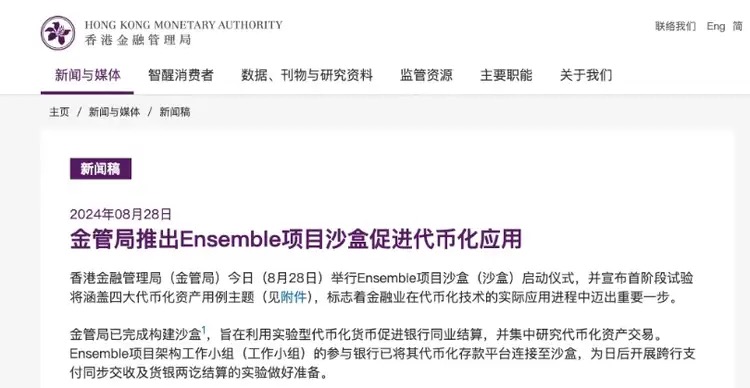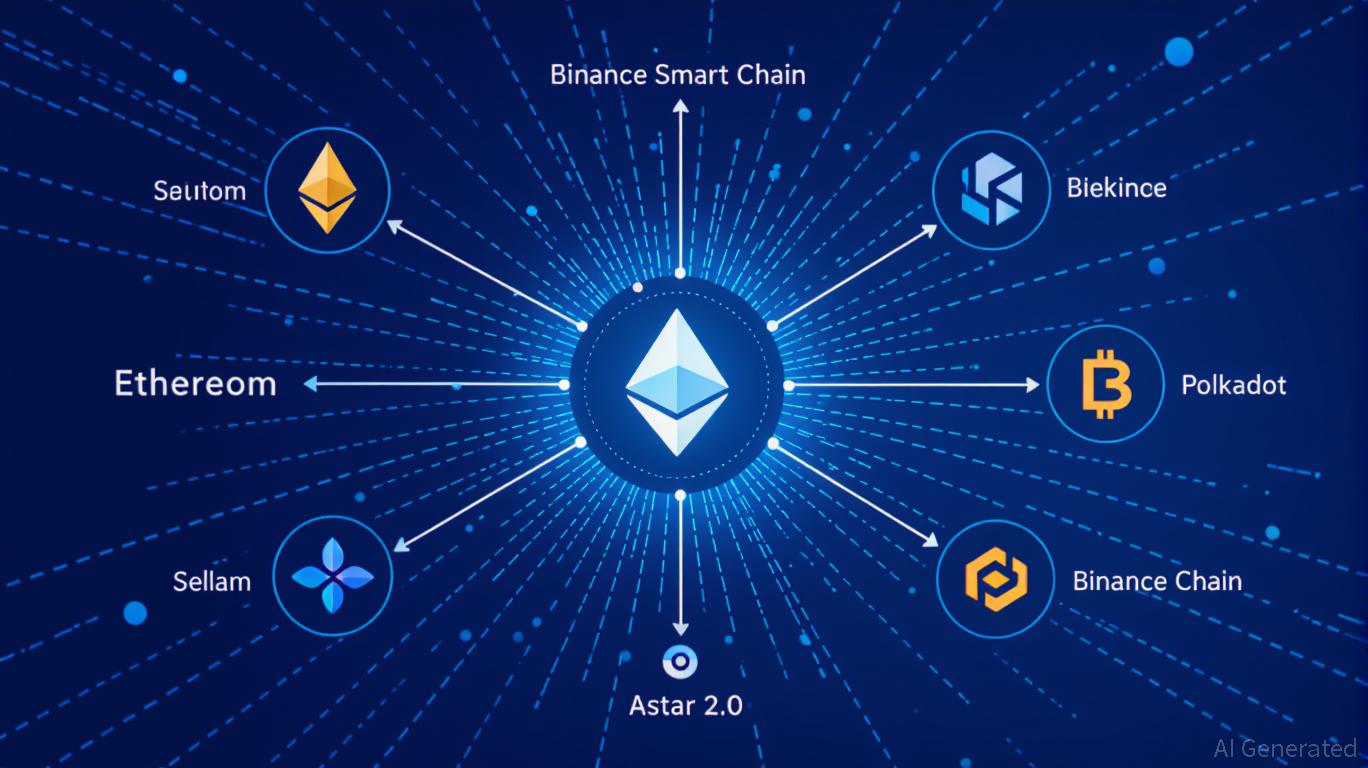Hong Kong Sandbox plans to focus on the Bund conference, and RWA becomes a new theme for China's Web3?

- Longxin Group Chairperson Xu Changjun delivered a keynote speech titled "Exploring the'New 'Trajectory of Investment and Unleashing the'Energy' of New Energy".
- ZAN CEO Zhang Chenguang delivered a keynote speech on "Exploration and Practice of DT RWA Empowering New Energy Industry in the VUCA Era".
- Xiao Gang, a member of the 13th National Committee of the Chinese People's Political Consultative Conference and former chairperson of the China Securities Regulatory Commission, delivered a speech titled "New Power of Financial Technology, New Engine of Digital Economy".

- Explore application scenarios: Allow participants to experiment with tokenized assets in a secure environment and explore various applications without immediately facing the pressure of full implementation.
- Technical Testing: Testing the compatibility between different digital assets, tokenized deposits, and CBDC. This stage is crucial to ensure the robustness of the technology and prepare for wider adoption.
- Establish industry standards: Establish common industry benchmarks for tokenization, which is crucial for the development of technology. By facilitating the entire lifecycle of tokenized asset transactions from creation to transaction to payment and settlement, Sandbox helps participants understand the actual impact of tokenization and its potential to solve real-world challenges, such as its application in supply chain financing.
- Solving real-world challenges: Sandbox promotes innovative applications aimed at solving practical problems in the financing field, especially in areas such as trade and supply chain finance. By addressing these pain points, Ensemble is helping to make tokenization a viable option for enterprises.
- Fixed Income and Mutual Funds: This topic explores how tokenization is changing traditional investment tools, making them more accessible and efficient. By creating digital representations of bonds or Mutual Funds, the financial industry can reduce settlement time, lower costs, and enhance liquidity, providing new opportunities for investors.
- Liquidity Management: Tokenization has the potential to revolutionize liquidity management by allowing assets to be split and traded on digital platforms. This could lead to more dynamic and efficient liquidity management, especially where quick access to funds is critical.
- Green and Sustainable Finance: The MAS also focuses on how tokenization can support green and sustainable finance initiatives. By tokenizing assets such as green bonds or carbon credits, the financial sector can enhance transparency and traceability, ensuring that funds are effectively allocated to environmental projects.
- Trade and Supply Chain Finance: Tokenization can solve major pain points in trade and supply chain finance by simplifying the process of tracking and transferring ownership of goods and financial assets. This can improve the efficiency and transparency of the supply chain, reduce fraud risks, and enhance overall market confidence.
- Enhance liquidity. Traditional real-world assets like real estate tend to be illiquid, meaning they can be difficult to sell quickly. Tokenization allows these assets to be split into smaller tokens that are easier to trade, improving liquidity.
- Increase accessibility. Tokenization makes asset classes that were previously inaccessible to many investors more widely accessible. For example, people with limited capital can purchase a small portion of high-value assets (such as real estate) through tokens.
- Reduce transaction costs. Blockchain technology can reduce the cost of trading and transferring assets as it eliminates the need for intermediaries such as brokers or custodial agents.
Disclaimer: The content of this article solely reflects the author's opinion and does not represent the platform in any capacity. This article is not intended to serve as a reference for making investment decisions.
You may also like
Astar 2.0: Leading a New Generation of DeFi and Cross-Chain Advancements
- Astar 2.0 introduces a zkEVM mainnet and cross-chain interoperability, slashing gas fees and enabling 150,000 TPS with 2025 scalability goals. - Strategic partnerships with Mazda, Japan Airlines, and Sony demonstrate blockchain's real-world applications in logistics, loyalty programs, and digital asset tokenization. - Q3 2025 data shows $2.38M DeFi TVL growth and 20% active wallet increase, alongside a $3.16M institutional ASTR token acquisition. - The platform aims to solidify its role as a foundational

Aster DEX Introduces New On-Ramp: Transforming Retail Participation in DeFi
- Aster DEX integrates institutional-grade custody and privacy tech (zero-knowledge proofs) to bridge retail-institutional DeFi gaps via BNB Chain partnerships. - TVL surged to $2.18B by late 2025 through yield-bearing stablecoins and hidden orders, attracting both retail and institutional liquidity. - Despite compliance gaps and wash trading concerns, Aster's Binance alignment and Coinbase listing signals growing institutional validation.

Bitcoin News Today: Bitcoin's Decline: $100k Level Emerges as a Key Arena for Institutional Investors
- Bitcoin fell below $95,000 on Nov 13 amid profit-taking and leveraged liquidations, testing $100,000 as a critical support level. - Analysts warn further declines could intensify volatility, despite $523M ETF inflows and institutional strategies like MicroStrategy's $65B Bitcoin exposure. - Mining expansions by Hyperscale Data and Canaan Inc. contrast with Ethereum's ETF outflows, highlighting divergent institutional risk assessments. - Market focus remains on Bitcoin's ability to hold above $100,000, wi

Bitcoin News Update: Bitcoin Faces Turbulence as Fed Actions, ETFs, and Leverage Trigger $95k Drop
- Bitcoin fell below $95,000 in late November 2025, erasing 2025 gains amid macroeconomic, institutional, and technical pressures. - XWIN Research identified three drivers: fading Fed rate-cut hopes, $1.1B ETF outflows, and $600M+ leveraged liquidations after key support collapses. - Analysts warn the correction could persist until mid-2026 if regulatory shifts or Fed policy fail to stabilize markets amid extreme fear metrics.
